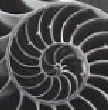
Problems for
Intermediate Methods in Theoretical Physics
Edward F. Redish
 |
Problems for |
| When we consider the properties of a spring, we typically imagine an ideal spring, which perfectly satisfies Hooke's law, T = k Δs. (I like to read this: if you pull on the opposite ends of a spring with a tension, T, the spring's length will change by an amount Δs, proportional to T with a constant k that is a property of the spring.) In actual fact, this is an awful approximation for most extensions or compressions of the spring. What we typically do is stretch the spring some amount beyond its rest length, say by hanging a weight from it. For small displacements around that equilibrium position, the extra force exerted by the spring is linear around the resting point: "F = -kx." |
 |
Sketch a graph of how the length of the spring varies as a function of T, considering both positive and negative values of T and going to very large values. Make plausible guesses for the values of the length when unusual things happen. Identify the "Hooke's law" regimes and identify salient features of your graph, described what is happening at those salient points.
| University of Maryland | Physics Department | Physics 374 Home |
|---|---|---|
 |
 |
 |
Last revision 28. September, 2005.